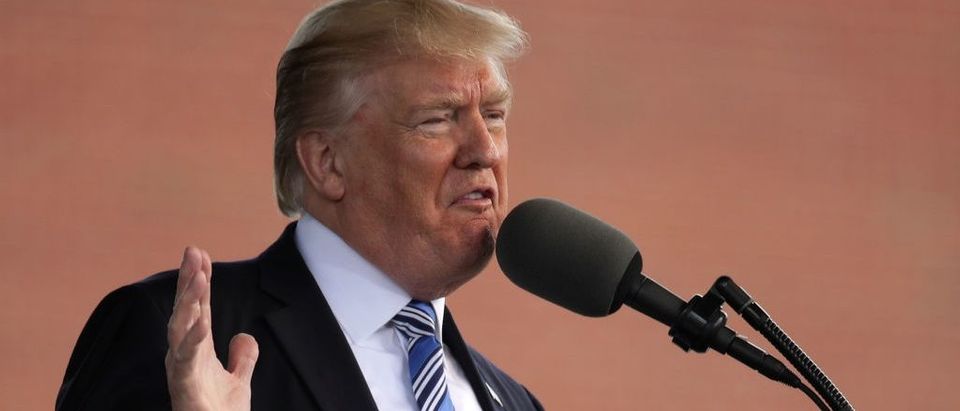In 2017, with new US President Donald Trump in office, the United States seems to be headed falling into the same trap as the previous US Presidents in the first decade of the 21st Century, when in the decade of 2000s US Middle East-predominant policy focus enabled China’s military rise threatening American predominance in East Asia. In fact, instead of nipping North Korea’s nuclear weapons program in the bud, President Trump seems to be getting sucked into the Middle East quagmire by ordering missiles strikes against Syrian Air Force over purported chemical attacks. Why should Trump waits and lets china continue taking the world’s economy, while in his address to Congress on February 28 he accused china of causing six thousands of US factories to be closed since it has joined Word Trade Organization. On the other hand, Trump invited Chinese President Xi to the United States or a so-called Super-Summit and also accepts the Chinese President’s invitation to visit China in 2017.
But Trump and his companions don’t seem so naive to let china flaunt in the world’s economy and industry and continue to exploit the century. For pursuing its plans and dominating middle east and South Asia, US put a comprehensive plan on its agenda and in this route it gets help by European Union as its major ally.
The German Chancellor Angela Merkel travels to Saudi Arabia and United Arab Emirates for boosting trade and economic relations. Through negotiations Germany accepts to consider UAE as a ‘Transit Point’ for transferring German goods into the region. And if two countries fulfill their commitments, UAE dependence to Southeast Asia’s technology market, Chinese companies and other brands like LG and Samsung will be significantly reduced and it will transfer 12 percent of Southeast Asia’s share of trade to Germany.
On the other hand, news says British military fleet are allowed to enter to Persian Gulf after a long time through a framework coordinated with Trump. This means that for making balance between its relations with china, US still needs using Middle East capacities and taking a very careful step to leave it.
Making Arab nations dampen their relations with south Asian countries would bring pressures to bear upon these countries. Stablizing US and British fleet in Persian Gulf and confining south Asian countries’ transportation in Bab al-Mandab strait and Suez and Hurmuz channels is a strategic way to make balance between US-China relations. Trump’s plan to visit Saudi Arabia in coming days and visiting king and leaders of Islamic nations such as Egypt and Pakistan in Riyadh has its special messages for China and India. Policies around buying 10 million barrels of Saudi Arabia’s oil and controlling the water channels will directly influence South East of Asia, Russia and Iran.


